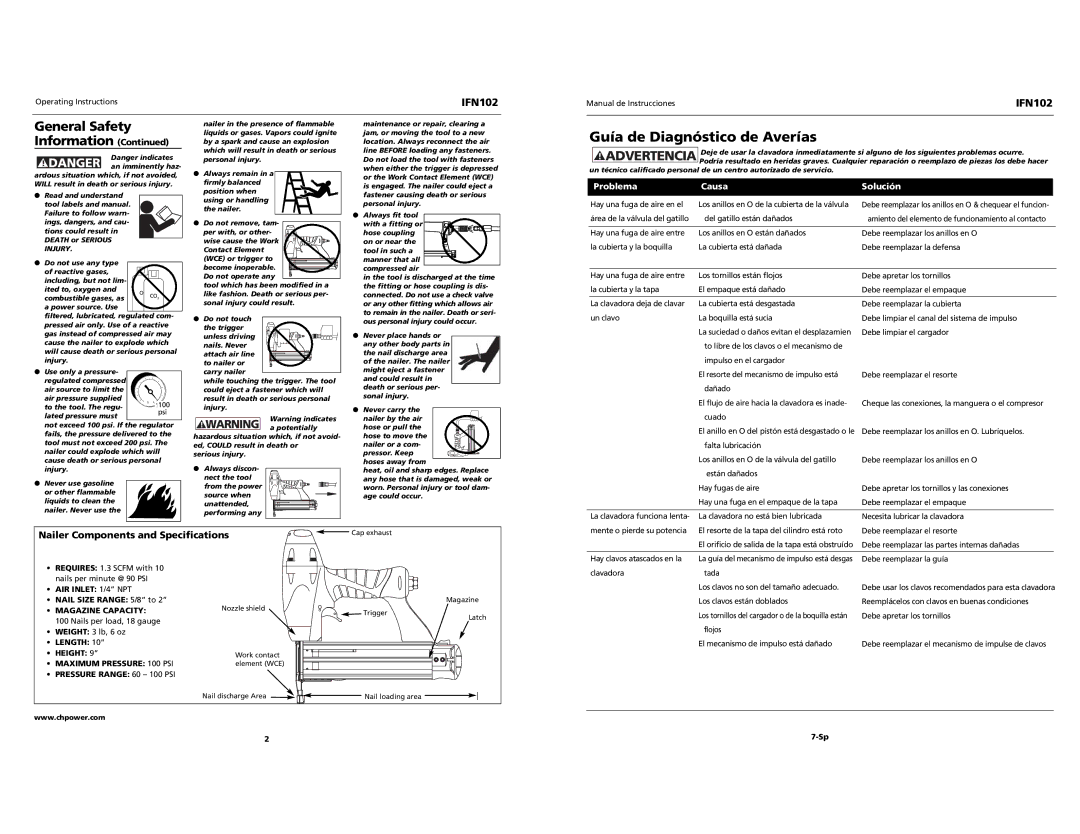IFN102 specifications
The Campbell Hausfeld IFN102 is a versatile and efficient air compressor designed to meet the demands of both household and professional users. This unit is particularly appreciated for its portability and ease of use, making it an ideal choice for a variety of applications, including inflating tires, powering air tools, and performing household maintenance tasks.One of the standout features of the IFN102 is its compact design, which allows for easy transport and storage. Weighing in at just around 30 pounds, this air compressor can be easily moved from one location to another, making it perfect for both indoor and outdoor projects. Despite its small size, the IFN102 is equipped with a powerful motor that delivers reliable performance, ensuring that it can handle a wide range of tasks without faltering.
The IFN102 incorporates advanced technology that enhances its efficiency and user experience. The unit features an oil-free pump, which means you won't need to worry about maintenance tasks such as oil changes. This not only saves time but also contributes to a cleaner work environment since there's no risk of oil spills or leaks. Additionally, the low noise operation of this compressor is a significant advantage, allowing users to work in residential areas without disturbing neighbors.
With a maximum pressure of 120 PSI, the IFN102 offers adequate power for most light-duty applications. Its 1.0 SCFM (Standard Cubic Feet per Minute) at 90 PSI output ensures a steady flow of air, which is essential for operating pneumatic tools, such as nail guns or air sprayers, with consistent effectiveness. The electric-powered design also means users can access air power wherever there is an electrical outlet, removing the hassle of dealing with fuel or refueling.
Safety features are also incorporated into the design of the IFN102, including a built-in pressure regulator and gauge, allowing users to monitor and adjust pressure as needed for the specific requirements of their tools. This feature not only enhances performance but also adds an element of safety, preventing over-inflation and potential accidents.
In summary, the Campbell Hausfeld IFN102 air compressor stands out for its portability, ease of maintenance, and efficient performance. Designed with user-friendliness in mind, it is an excellent choice for DIY enthusiasts, professionals, and anyone in need of a reliable air compressor for a range of applications. With its combination of advanced technology and thoughtful features, the IFN102 promises to deliver the power and convenience users expect, making it a valuable addition to any toolkit.

